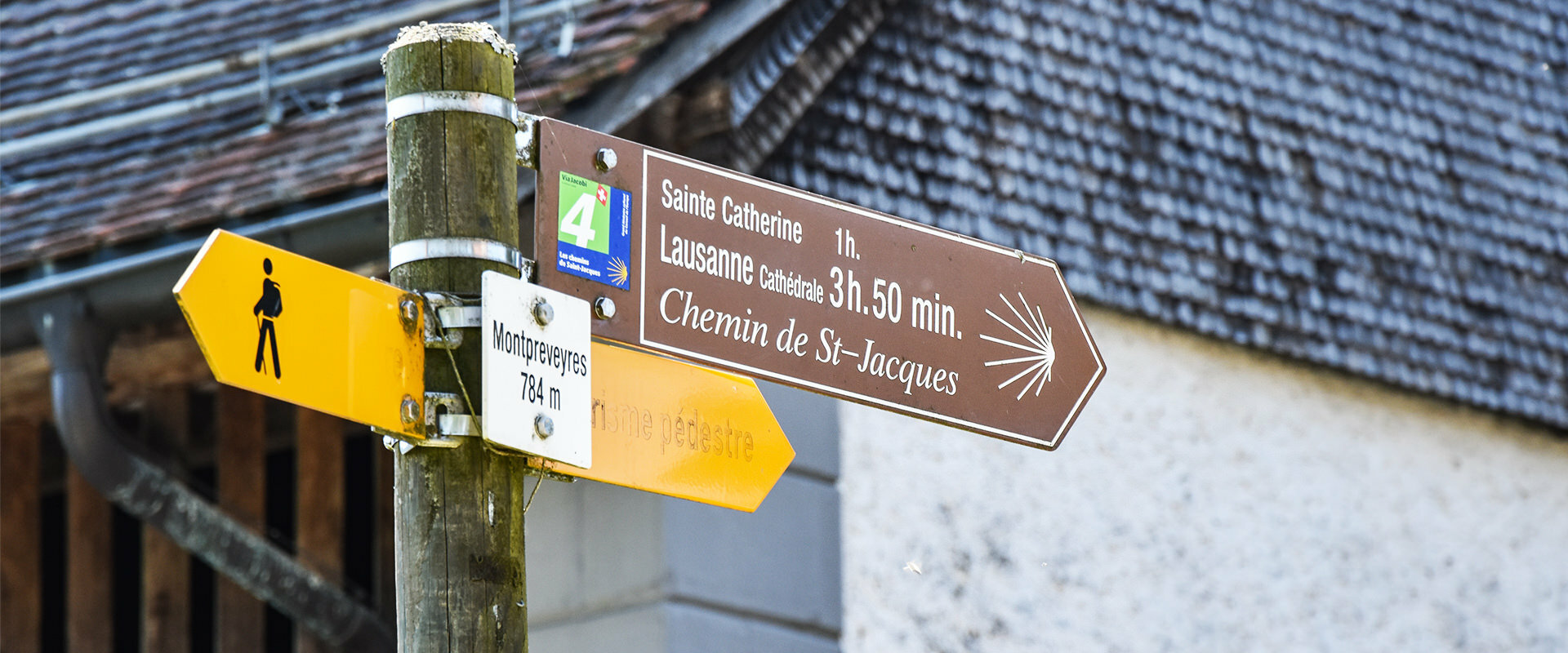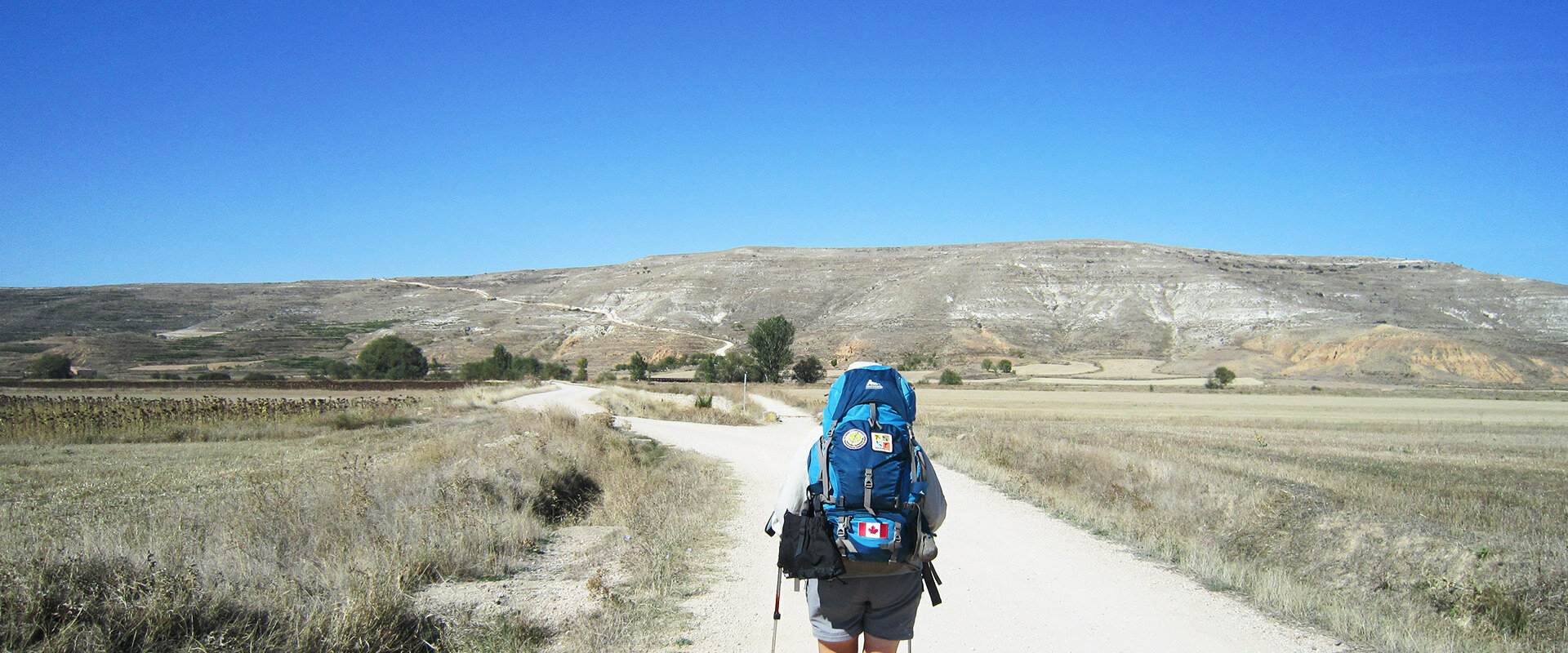How I nearly lost my toes hiking El Camino
I’m not a very good hiker. I walk too fast, pack too much and breath out of my mouth so heavily it sounds like I’m hyperventilating. I’m the last person you’d expect to hike 1,500 km as part of a planned vacation. But in 2016 I had just graduated from university, and in the grand tradition of the recently released, I decided to run away to Europe instead of getting a job.
El Camino de Santiago is technically a pilgrimage route, or network of routes, spanning thousands of kilometres across Europe and ending at the burial site of Saint James in Spain. Tens of thousands of hikers walk the main path every year, which takes about a month, and it’s become more of a vacation adventure for young people than a religious exercise.
Still, some elements of the original intent still exist, including the incredibly cheap and crowded donativos along the route. These enormous pilgrim hostels cost around €10 a night and pack hundreds of hikers into gymnasium-style rooms. The relatively low cost of these accommodations make El Camino an attractive option for long-term European travel, even to people with no particular interest in hiking—perfect for a recent graduate on a tight budget.
The fact that I’d never done anything longer than a day hike before and had no idea what it was going to be like didn’t really concern me. “It’s an adventure,” I would tell anyone who questioned my preparedness. “I’ve been looking things up.”

You’re constantly surrounded by other hikers, many of whom are also struggling, and you get used to the nightly ritual of swapping medicine and complaints.
In reality, all I’d done was some surface-level research on pilgrim forums and watched a couple of hiking movies in bed. I bought everything I thought I would need (backpack, camelbak, socks and a little med kit, all radiantly colored in neon pink and greens) in one trip to Mountain Equipment Co-op, except for my shoes, which I ordered online. I bought waterproof hiking boots in my usual size—a mistake that any seasoned hiker could have warned me against.
My first two weeks of hiking through southern France were rough. Walking 30 km a day over rough terrain, after living in cities my whole life, resulted in dozens of blisters and constant tendonitis. In any other situation I would have taken a break, but here’s the thing about El Camino: even if you’re travelling alone, you’re never really alone. You’re constantly surrounded by other hikers, many of whom are also struggling, and you get used to the nightly ritual of swapping medicine and complaints.
In the morning, everyone gets up to walk anyway, even those who threatened to go home the night before. It can be hard to keep your own pain in perspective. After all, the original pilgrims of Santiago would have suffered through far worse than a few blisters, right?

A local French woman found me there and drove me to the hospital. My Camino was over.
I made it 640 km before I realized that I was in serious trouble. The normal-sized shoes I’d bought weren’t big enough to accommodate my swelling feet. The sudden extra weight gain of carrying my 10 kg backpack was squishing my feet down like pancakes, crushing them into the sides of my shoes. My toenails died but didn’t fall off, and the blisters below them got infected.
I hobbled around on what felt like bee stings for three days before finally collapsing onto an iron chair by the side of the road. I took off my shoes and cried. A local French woman found me there and drove me to the hospital, where a doctor told me that they would need to surgically remove the nails. My Camino was over.
Two days later, after signing my consent on a stack of byzantine French medical forms, a couple of nurses wheeled me into an operating room.
They pushed my bed up against a steel table in the centre of the room and hesitated, waiting to see if I would move onto it myself. I mustered what was left of my dignity and jumped over on my own, papery hospital gown fluttering indiscreetly. The nurses laughed at my eagerness (or bum) but said nothing—we’d already established that my French wasn’t good enough for their macabre medical humour.
An awkward silence descended while we waited for the surgeon, the nurses picking at their masks and trying not to make eye contact. I felt like I was hosting a very uncomfortable dinner party; my guests were getting hungry but their food was still alive, fidgeting on the table.
Finally, the anesthesiologist appeared upside down above me. She held a plastic muzzle over my mouth and nose. “This is for you,” she said, unnecessarily. “I’m going to inject you now.” The nurses were gone from view, probably gathering their tools.
I started hyperventilating. The plastic mask slid slowly off my face, and I guess it wasn’t all that important because nobody moved it back. “Think of a relaxing place,” said the anesthesiologist. The surgical lights above me, bright like stadium floodlights, started gliding around the room like snails, trailing streaks of white ooze behind them. I realized it was my eyes that were moving, rolling around of their own accord.

A cozy, laissez-faire attitude settled over me. “It’s working,” I whispered. I tried to look down at my feet to where the surgery would be taking place and passed out.
When I woke up afterwards, the French woman who found me was sitting by the side of my bed holding a few books. Her name was Edwidge, and her enormous glasses swallowed her face. She patiently translated everything the nurses came in to tell me. They said I was lucky that I’d come in when I did, and that if the infection had reached bone, they would have had to remove my toes. I don’t remember them warning me of this beforehand, which I’m oddly grateful for.
Edwidge visited me every day during the week and a half I spent in recovery, bringing me little pastries and gifts to keep my spirits up. She listened to me explain why I chose the Camino, and I listened to her explain why she stopped to help me. Our reasons ran in parallel, grounded in a deep desire to find faith in the kindness of strangers after a trauma.
Her generosity blew my mind. It was a wake-up call, and it changed my perspective on travelling. Was I hiking just to procrastinate on getting a job back home? Or was I there to test my resolve— shedding whatever parts of me couldn’t hack it through a little surgical setback?
When I was fit enough to leave the hospital, Edwidge helped me find a local sports store, where I bought better shoes and tossed half of what I’d packed. She drove me to the next stop along the hiking route and wished me good luck. I walked the last 800 km to Santiago, over the Pyrenees mountains and the hot flat plains of the meseta.
To anyone else considering the Camino, I highly recommend it despite the problems I had. Here’s my advice: Get shoes a half-size up from what you usually wear and break them in beforehand; take the generosity of those you meet along the way at face value; respect your body’s limits. And if you happen to need a little surgery along the way, just remember, it doesn’t have to be the end of your adventure.
Issue 5



